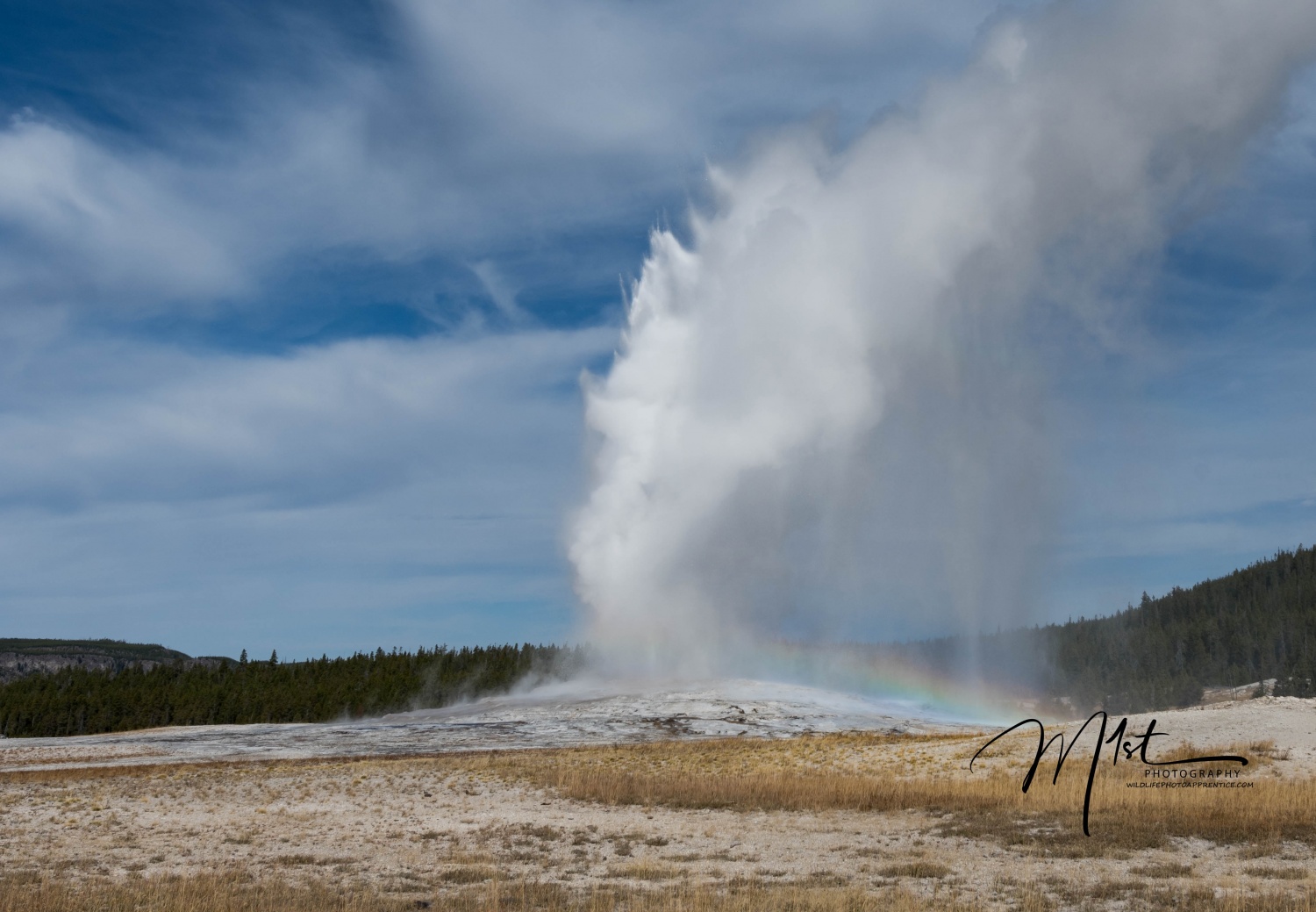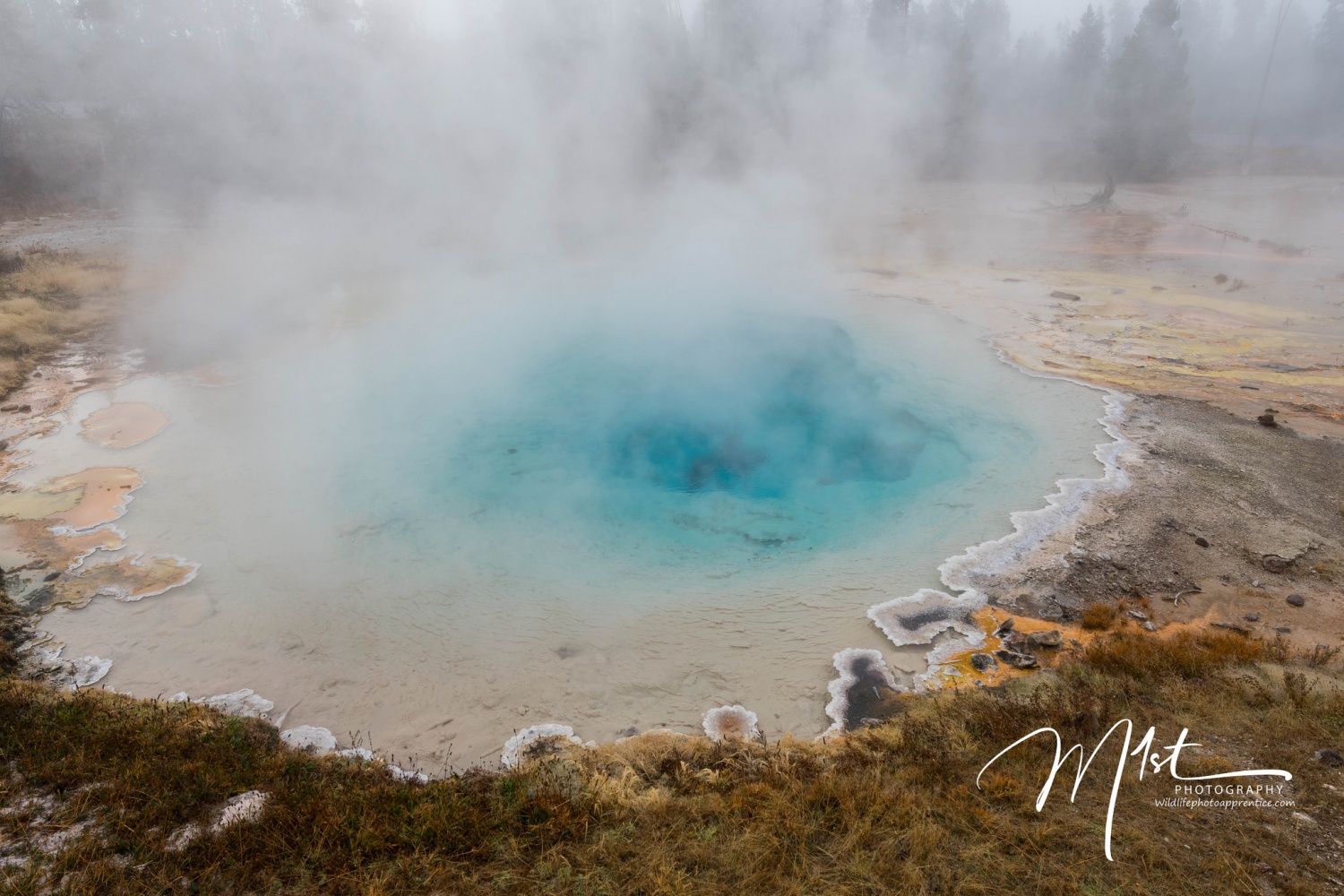If Yellowstone is known for anything, it’s one thing, wolves. My trip to Yellowstone wouldn’t be complete without trying to find and photograph a wolf. These iconic animals represent the west’s wild and untamed past. Hunted to extinction in the lower forty-eight states long ago, they were reintroduced into Yellowstone in the early nineties. Since that time they have successfully established themselves in several western states. They are the subject of much controversy. Thousands of visitors a day are drawn to the park with hopes of getting a glimpse of these elusive creatures. In 2016 there were 11 packs with a total of 108 wolves who called Yellowstone home. Although there are over a hundred wolves in the park, as you might imagine finding them can be somewhat difficult, and getting a decent photograph of one can be darn near impossible.

Each morning as we drove to the Lamar Valley we would constantly scan the hillsides and valleys for wildlife of any kind. It’s a hit or miss strategy at best and you need help anywhere you can find it. As anyone who has been to Yellowstone looking for wildlife will tell you if you see cars stopped on the road looking at something you should stop and look as well. The Yellowstone Wolf Project performs wolf research and monitoring in Yellowstone on a year-round basis that is critical to the long-term health of wolves in Yellowstone. The Projects wolf watchers can be found along the roadside in the Lamar Valley every day using spotting scopes to find wolves. They are very friendly folks who are more than willing to share information about the wolf packs in the park and even let you look through their scopes. They are a great resource.
Wolf packs are fiercely defensive of their territories, which range in size from 30 to 2,500 square miles. In Yellowstone, the average territory size is 165 square miles overall, with territories in the northern section of the park being about one-third the size of the ranges in the interior of the park. This is likely due to the concentration of elk in the north since the size of a pack’s territory is directly related to prey availability.
On our third morning in the park, we noticed a number of people with scopes set up on a hill next to the Yellowstone Institute looking across the Lamar Valley to the south. A quick inquiry informed us that there were several wolf pups and their adult guardian wolf about a mile away to the south. It may not seem that far but taking photos of wolves a mile away and getting anything worthwhile is very difficult. I attempted several shots with my Nikon D500 on a 600mm f4 with and without a 2.0 teleconverter. Even with a tripod, the results were less than desirable.
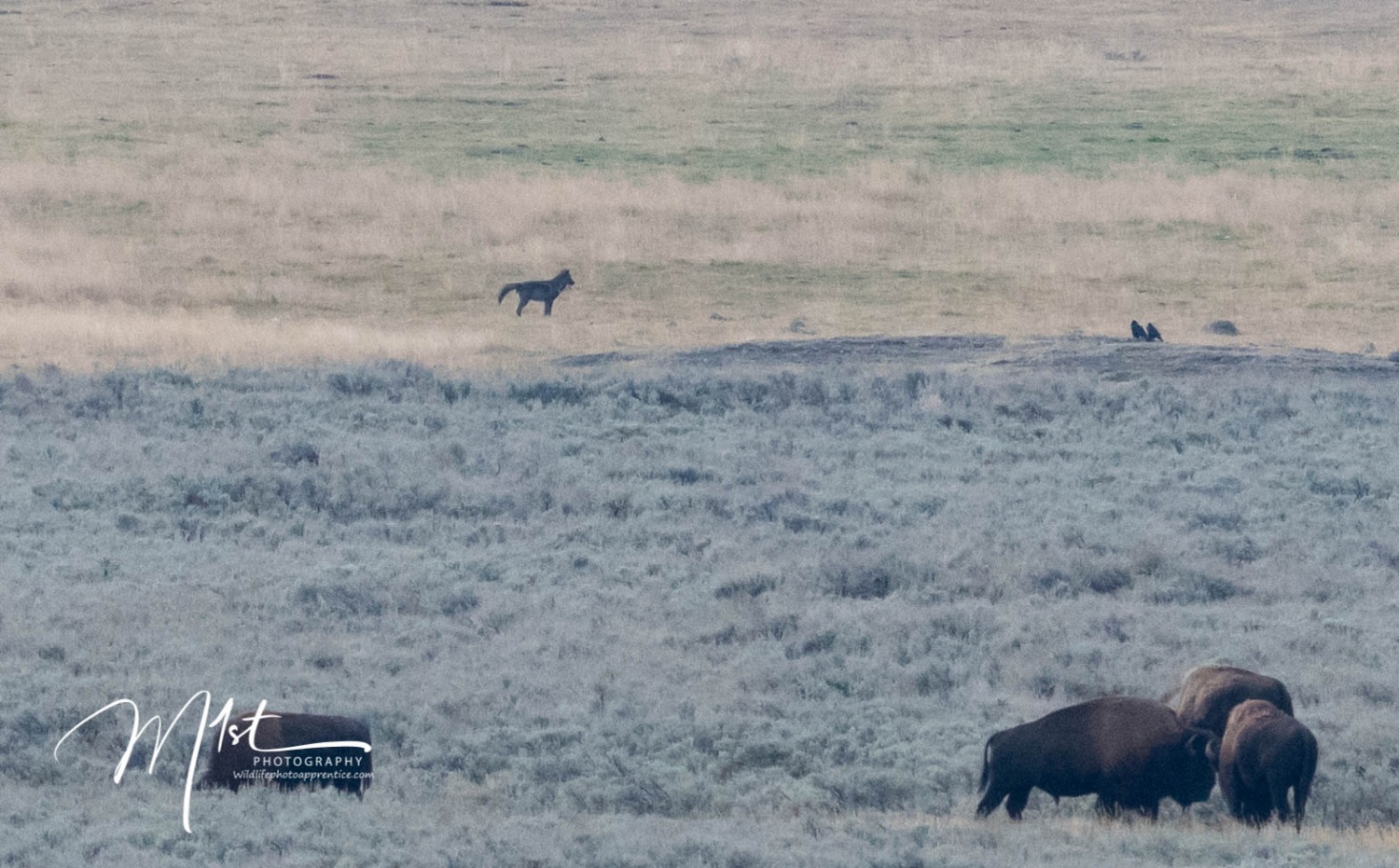
The gray wolf is both a predator and a scavenger. Wolves cannot kill large prey alone and therefore must hunt in packs. They use sophisticated and coordinated strategies that may have served as models for early human hunters. The primary large prey for wolves in Yellowstone is elk, although wolves will also hunt moose, deer, and bison. In the winter, elk provide more than 95 percent of their food in summer they comprise approximately 85 percent.
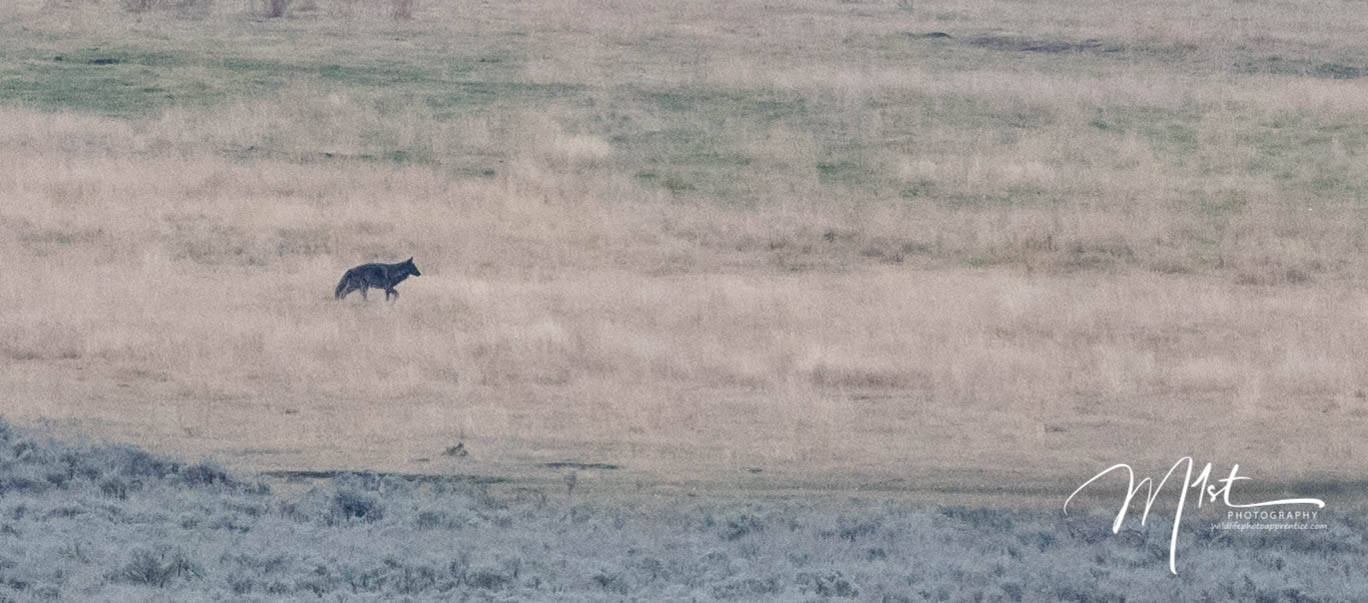
Wolf pup at about 1 mile D500 with 600mm f4
Wolf pups are born blind and deaf and weighing only 1 pound. They are completely dependent on their mother for warmth and food. At 10 to 15 days of age, the pups have grown significantly, weighing 4 pounds, and their eyes open for the first time. The wolf pups are only able to crawl, as their back legs are not yet fully functional. At six months of age, healthy wolf pups weigh 60 pounds and are able to travel and hunt with the pack.
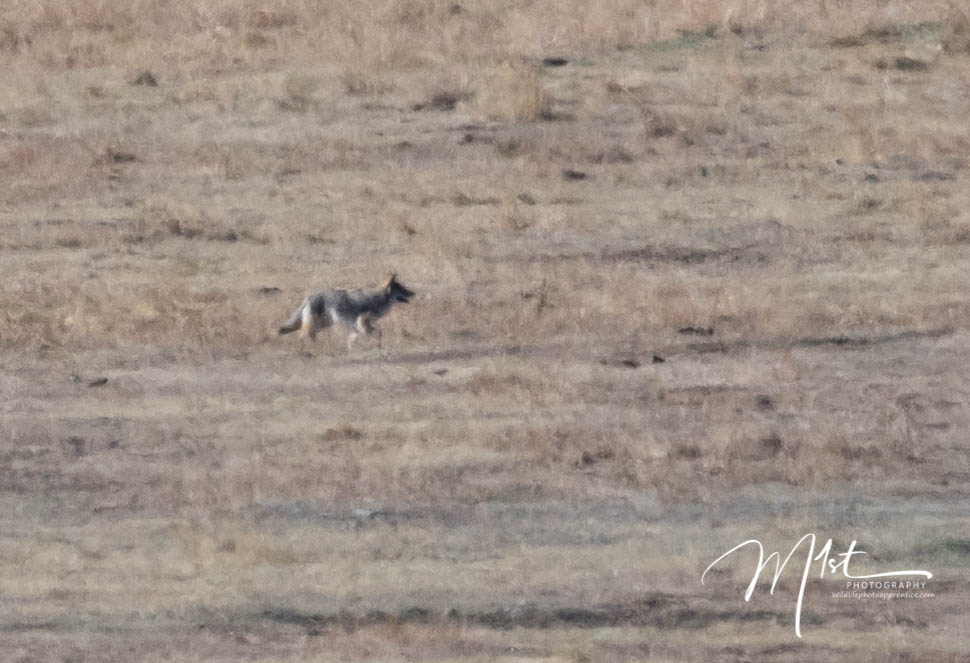
We watched and photographed the Lamar Valley wolves for about an hour and a half before leaving in pursuit of other wildlife. Even though the photos were sub-par as far as quality, seeing a wolf in the wild and being able to photograph it from any distance was a photographic experience I won’t soon forget, and another check off my bucket list of photographs.
We decided that one day of our adventure to Yellowstone would include the Grizzly Wolf Discovery Center in West Yellowstone. The Center is located just outside the west entrance to the park. On the morning we visited it was raining hard off and on, so we welcomed an opportunity to see wildlife in a somewhat more sheltered environment. The main purpose of the Center is to help visitors gain knowledge about grizzlies and wolves through educational programs. Grizzly bears that live at the Center are animals that were unable to survive in the wild for different reasons. The wolves were captive-born, unplanned litters, and cannot be released into the wild.
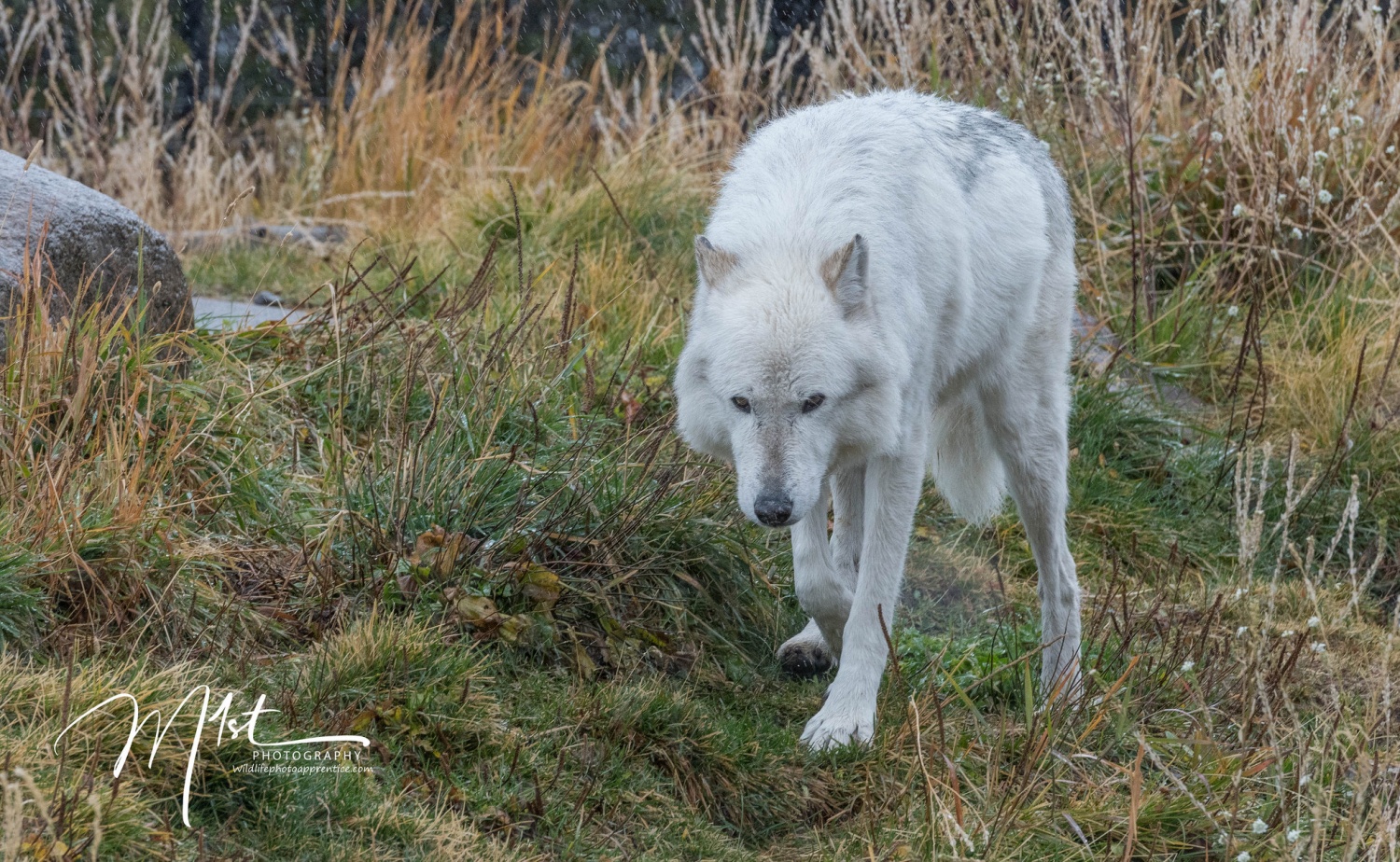
The Center was educational in my opinion and worth the visit. Unless you’re very lucky during your trip it may be your only chance to see a grizzly or wolf up close. The museum portion was full of information on both species.
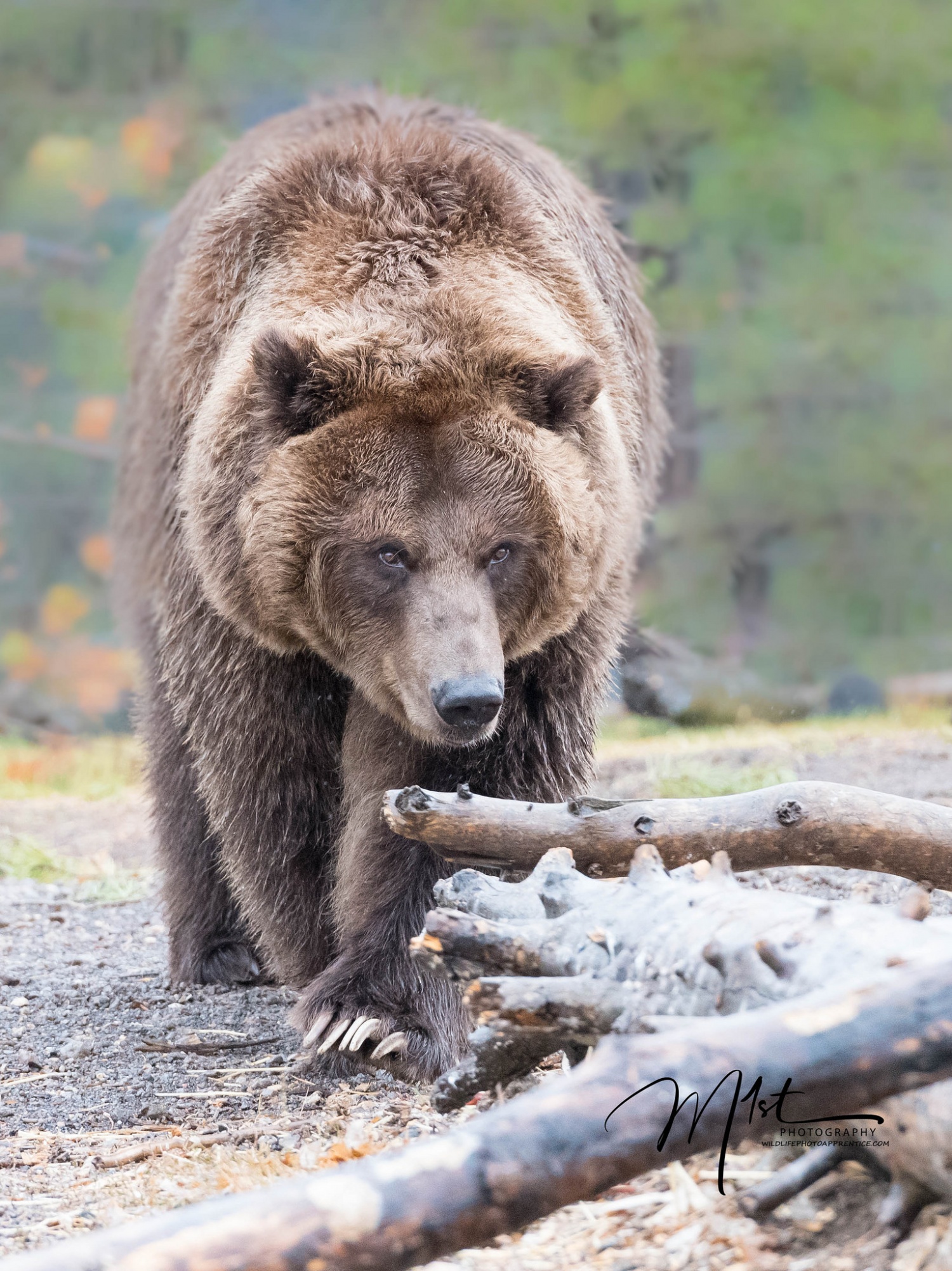
I don’t normally enjoy photographing captive animals and find their confinement somewhat sad, but knowing that these majestic animals could not survive in the wild and would otherwise be euthanized made the experience more enjoyable. I was able to get a number of good photos and my D500 on 70-200 f2.8 was the perfect combination for the occasion.
Our trip to Yellowstone also included visits to the geyser basins, old faithful, Yellowstone Lake, and the fishing bridge. There were waterfalls and landscape photo opportunities around every bend. If you love the great outdoors and wildlife photography then you owe it to yourself to take a pilgrimage to Yellowstone at least once in your lifetime, you won’t regret it.
